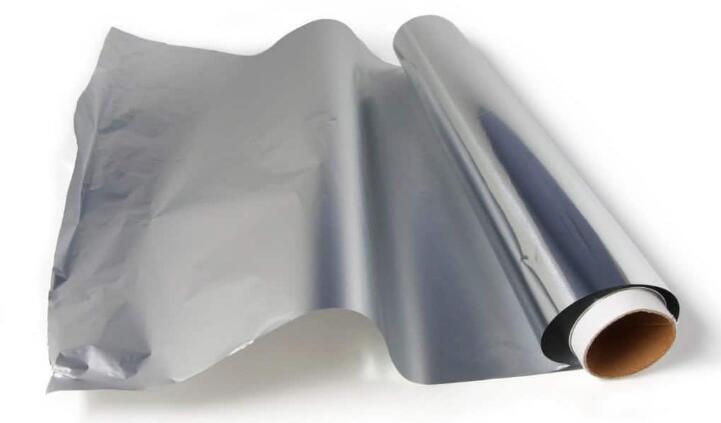The shielding effectiveness of aluminium foil depends upon the type of incident field (electric, magnetic, or plane wave), the thickness of the foil, and the frequency (which determines the skin depth). Shielding effectiveness is usually broken down into a reflection loss (the energy bounces off the shield rather than penetrates it) and an absorption loss (the energy is dissipated within the shield).

Aluminum foil for electromagnetic shielding:
Excellent High Frequency RF Shielding characteristics
Effective barrier against Low Frequency AC Electric Fields when grounded.
Electrically Conductive
Weather Resistant
Can be used as a Vapor Barrier – not breathable
Heavy Duty / Tear Proof
Flexible and light weight which allows for an easy installation
Safe to handle and non-toxic
Although aluminium is non-magnetic, it is a good conductor, so even a thin sheet reflects almost all of an incident electric wave. At frequencies more than 100 MHz, the transmitted electric field is attenuated by more than 80 decibels (dB) — however actual energy absorption is minimal: the remaining high-frequency rf energy is almost perfectly reflected from uniform flat aluminium surface, and thus, reflected signal may continue to propagate internally, and if holes or passages of suitable geometry exist in the shield, signal propagation may continue out through those, the aluminium being good material for implementation of a microwave-frequency waveguide.
Thin sheets of aluminium are not very effective at attenuating low-frequency magnetic fields. The shielding effectiveness is dependent upon the skin depth. A field travelling through one skin depth will lose about 63 per cent of its energy (it is attenuated to 1/e = 1/2.718… of its original energy). Thin shields also have internal reflections that reduce the shielding effectiveness.For effective shielding from a magnetic field, the shield should be several skin depths thick. Aluminium foil is about 1 mil (25 μm); a thickness of 10 mils (250 μm) offers less than 1 dB of shielding at 1 kHz, about 8 dB at 10 kHz, and about 25 dB at 100 kHz. At these frequencies a ferromagnetic material such as mild steel is much more effective, due to different and complementary electromagnetic permeability properties, and common practical shielding implementations utilise both an inner high-frequency reflective material such as aluminium, preferably bonded (via annealing or electroplating, done to avoid capacitance between separated layers), to a more substantial structural ferromagnetic shell, usually mild steel (in specialized applications, more expensive, less structurally useful and less workable materials may be preferred.) Despite the relative low mass density of aluminium, this design is usually both lighter and more effective than an equivalently absorptive design utilizing aluminium alone.



